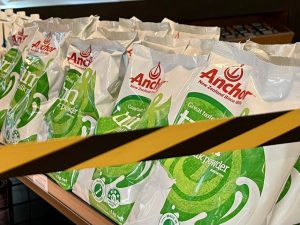
The changes are intended to help farmers manage cashflow, without compromising Fonterra’s credit rating, chairman John Monaghan said.
The advance rate scheme is a way to spread risk from fluctuating global dairy prices across the year by breaking up payments to farmers based on the forecast farmgate milk price. Without the scheme, the co-operative would require more equity.
By July 31 each year the co-operative has paid 85 per cent of the milk price forecast to suppliers. After the annual results are announced in September, a wash-up is done based on the actual results. Farmers receive three retrospective payments of 5 per cent each in August, September and October.
The changes that have been announced tweak both the the timing and the projected amount farmers get paid according to the schedule.
The idea, said Farm Source director Richard Allen was to ensure farmers had enough cashflow at times of the year when expenses were highest.
“Cash is king on farm,” he said.
The changes to the advance rate will come into effect from June 1 and include bringing forward the monthly payment date from the 20th to the 15th of the month to give five extra days of working capital to farmers so they can pay bills on time.
Another change will see retro payments to farmers brought forward and settled as soon as possible after the year end, the letter said.
The final retro payment, traditionally paid in October, would now be paid in full within five working days of the annual results, which were normally announced around September 20. This would result in two payments being paid in September, one on the 15th and one at the end of the month.
As an example, this change was likely to result in the average farm (producing 140,000 kilograms of milk solids at a farm gate price of $7.30) receiving $50,000 three weeks earlier.
Allen said it was a significant change for farmers.
“That time of year it’s calving on farm, and expenses are at their highest. So bringing that payment forward helps better align with their expense curves on farm,” he said.
Another change would be scrapping one of two existing advance rate schedules. Up until now, the schedule used depended on the forecast milk price.
If it was above $7 Fonterra started the season paying 60 per cent. If it was under $7 it started paying at 65 per cent.
“This was to manage risk but it was quite confusing. We have scrapped that and gone with a single advance rate schedule at 65 per cent. For farmers, if the milk price is above $7 then an average of $30,000 is brought forward,” Allen said.
Feedback had been “overwhelmingly positive,” he said.
The letter to suppliers stated the advance rate would start in July at 65 per cent of the mid-range of the forecast milk price.
“These improvements have been managed without reducing the strength of our co-op’s balance sheet or having a negative impact on our credit rating,” Monaghan said.
Federated Farmers Hawke’s Bay president Jim Galloway said the changes would help with cash flow and get money into farmers hand’s quicker.
The level four lockdown had resulted in extra expenses for many farmers, whose working arrangements were not as efficient and the cost of services farmers relied on had gone up in some cases.
Farmers had already been under pressure from the drought, which was driving up the cost of feed, he said.
Waikato dairy farmer Jaquie Hahn said the advanced payments should be welcomed because they would help the whole economy.
In the letter to suppliers Monaghan said Fonterra would be making a series of announcements before the start of the 2020/21 season about changes to its advance rate and incentive payments linked it its Co-operative Difference programme.






















